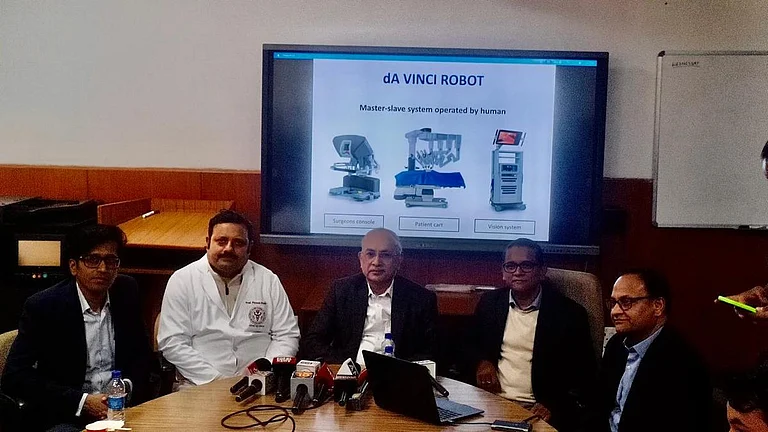Ahead of the stubble-burning season in north India, which becomes a major cause of pollution and extremely poor air quality during winters, especially in Delhi-NCR, several states have once again committed to reducing farm fires. While a few days ago, the Commission for Air Quality Management (CAQM) said that Punjab is likely to reduce stubble burning by around 50%, Haryana too, has laid out a plan aiming to eliminate such fires this winter.
With an anti-stubble burning action plan in place, Haryana will attempt near elimination of farm fires this year through a series of financial incentives and will work to provide farmers with alternative ways of decomposition, CAQM stated recently.
Identifying hotspots
The Haryana government is said to have identified areas, through satellite images, where paddy burning is most common. According to estimates by the Haryana government, about 14.82 lakh hectares of land in the state is under paddy cultivation, which is expected to generate over 7.3 million tonnes of paddy straw (non-basmati), the CAQM said in a statement.
According to CAQM officials, hotspot districts in the state, where farm fire incidents were found to be more than 500 last year, are Kaithal, Fatehabad and Jind. Kurukshetra, Karnal, Yamunanagar, Sirsa, Ambala and Hisar are also areas of concern, reported The Indian Express.Based on the rate of burning stubble, 147 villages in these districts have been identified to be in the ‘red zone’ with active fire locations of six or more. Here, the state plans to manage around 5 lakh acres of paddy fields using the Pusa Bio Decomposer.
Pusa Bio Decomposer and other steps
The de-composer that is supposed to be given to the farmers for free, is meant to help decompose stubble before the rabi crop is sown and prevent stubble burning in the process.Besides this, the government has reportedly pushed for incentives that would include the usage of machinery that would help in clearing fields and use straw as fodder. With over 80,000 crop residue management machines in the state, effective utilisation of these machines is to be ensured at the district level, according to government officials.This would reportedly ensure district-level monitoring of the plan besides what has been decided at the state level.
The areas, which have been identified as ‘red zones’ and ‘yellow zones’, will have established control rooms, assembled enforcement teams, and rolled out incentives aimed at dissuading farmers from resorting to crop residue burning, according to a report by The Times of India.
Financial incentives by Haryana govt
To discourage farmers from burning paddy straw, the Haryana government has also introduced financial incentives.
The government has set a price of Rs 2,500 per tonne for purchasing paddy crop residue from farmers, the CAQM said. Farmers will receive Rs 1,000 per acre for ex-situ/in-situ management of paddy crop residue, the CAQM said.
If farmers choose to grow crops other than paddy in their fields, they can receive Rs 7,000 per acre under the ‘Mera Pani Meri Virasat’ scheme, it added. Those who use direct seeding of rice, a method wherein rice seeds are directly drilled into the field, can get Rs 4,000 per acre.
Further, panchayats which completely stop burning crop residue will receive incentives ranging from Rs 50,000 to Rs 1 lakh, the CAQM said. Farmers who need to transport leftover crop residue to places like gaushalas will receive Rs 500 per acre, up to a maximum of Rs 15,000, it added.
Clusters identified for 2G ethanol plant projects are receiving special support from the government in the form of subsidies, according to CAQM.


























